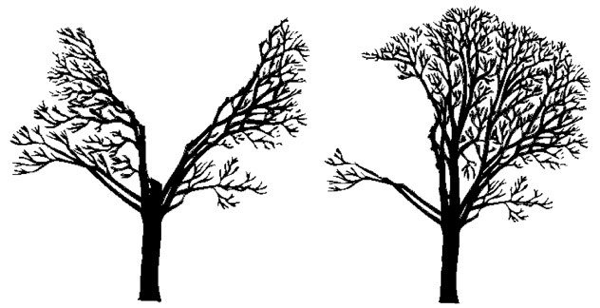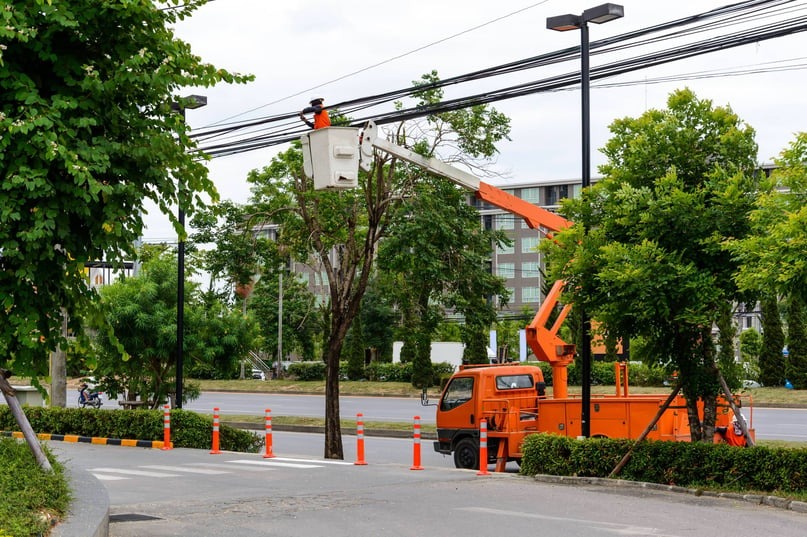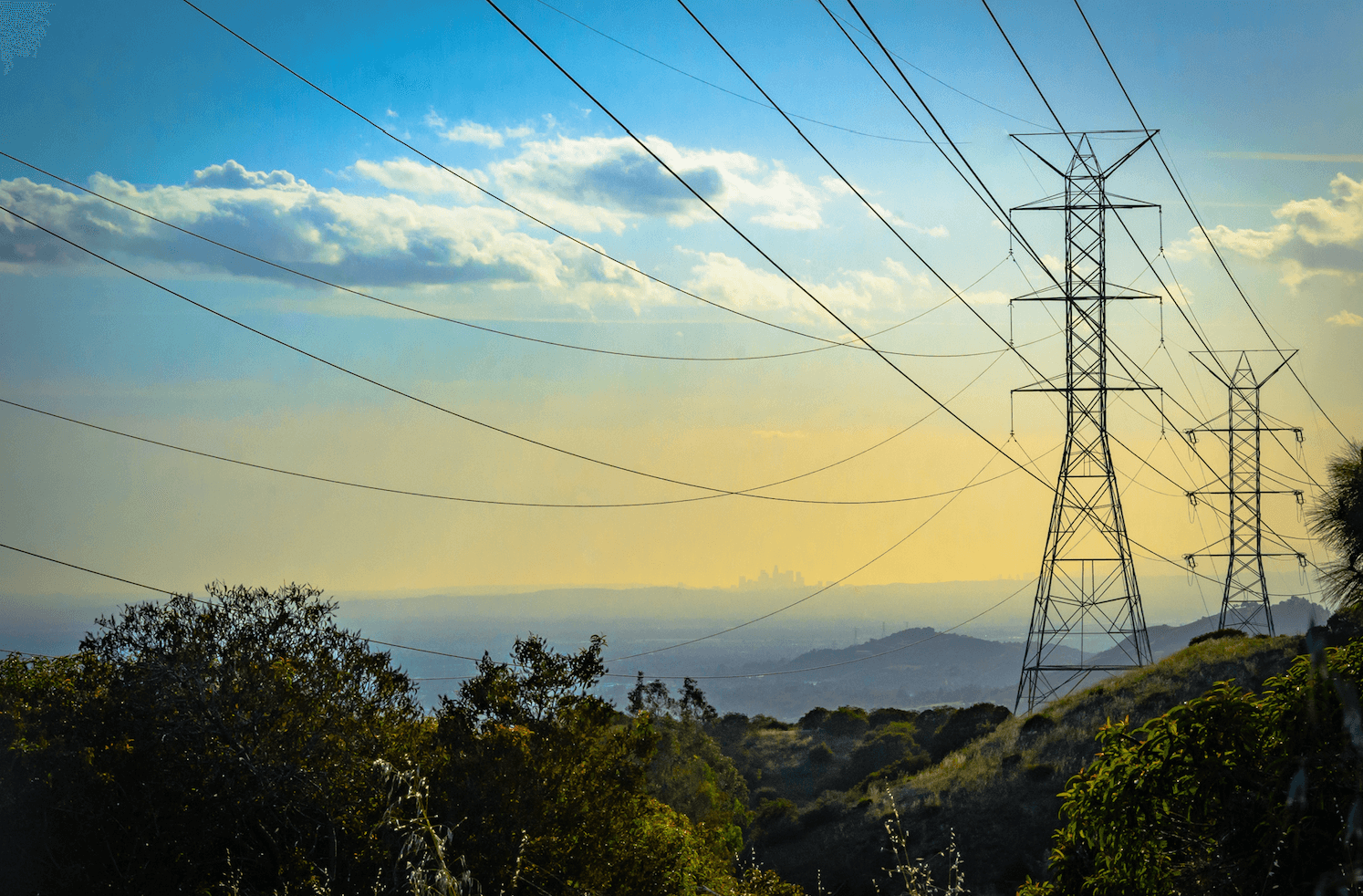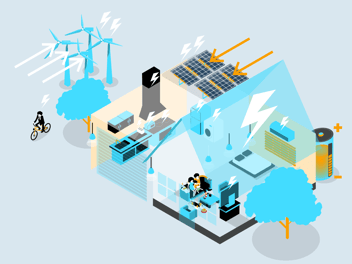
What is Vegetation Management?
Vegetation management involves the identification and response to vegetation (i.e. trees and brush) that threatens surrounding powerlines.
For utilities in the United States, vegetation management is the largest preventive maintenance expense, but it is well worth the money as it makes utilities more reliable and reduces power outages. There are a variety of vegetation management methods, including tree pruning, herbicides, brush removal, and hazardous tree removal.
Types of Vegetation Management
Hazardous Tree Removal
A tree is considered hazardous when it is unhealthy and has the potential to fall on a powerline. The removal of such hazardous trees prevents them from hitting powerlines, in turn preventing the blackouts and wildfires that could be started otherwise.
Tree Pruning
Whereas hazardous tree removal involves structurally unsound trees, tree pruning involves the maintenance of healthy trees that have the potential to grow close to powerlines. The optimal form of tree pruning is directional pruning. While other methods can reduce the structural integrity of a tree, directional pruning takes both structural integrity and the health of the tree into consideration. This method guides tree branches away from powerlines and reduces internal decay. Directional pruning also decreases the need for future pruning.

Examples of directional pruning.
Herbicides
Herbicides and weed control are used to kill off unwanted vegetation. According to the T&D World Magazine, herbicides “have been proven to greatly reduce the cost and environmental impact of maintaining utility rights-of-way (ROW)."
Choosing not to implement herbicides can be costly. In fact, a loss of herbicides case study by the Centre for Energy Advancement through Technological Innovation (CEATI) found that choosing not to use herbicides doubled the cost of vegetation maintenance over the next 20 years. David Smith, a senior forester at Progress Energy, said “the NERC regulations add a lot of pressure to keep tall vegetation away from lines. Simply trimming the trees back is not cost-effective anymore. We have to remove them with herbicides.”
The reason herbicides are more cost-effective is because they allow utilities to manage vegetation while it is still low, rather than having to deal with taller vegetation later on.
Brush Removal
Even low-lying brush has the potential to cause outages and fires. Brush removal is also important because brush can limit access of line crews to powerlines when they are inspecting them. Management of all vegetation near powerlines is important, both to prevent power outages and wildfires as well as to allow for easier maintenance of the powerlines themselves.
Curious how Vegetation Management is Evolving? > >
Why Should Utilities Manage Vegetation?
Why is vegetation management a concern for utilities? For starters, utilities are required to maintain constant clearance between trees and transmission lines. They also must create a vegetation management plan that adheres to state and local requirements. If utilities do not comply, they can be fined.

As of August 13, 2008, FERC had “approved 96 new reliability standards. These cover the three Ts—'trees, training and tools’—identified by the blackout task force but are not limited to them,” says Joseph McClelland, director of FERC's Office of Electric Reliability. "If utilities do not comply to these standards, FERC can impose millions of dollars of fines, depending on the infraction.”
These regulations have been imposed on utilities, in part, to reduce blackouts. When powerlines and trees come into contact with each other, a short circuit can occur and cause a blackout. In August 2003, trees collided with a powerline in Ohio and caused the largest blackout in North American history. This blackout affected 50 million people, was connected to at least 11 deaths, and had an estimated cost of six billion dollars.
Regulations ensure public safety in other ways as well. Because of the water content in plants, they can conduct electricity when they touch powerlines. Anyone who touches or attempts to climb a tree that is in contact with a powerline could experience fatal amounts of electricity.
Wildfires can also result from the failure to properly maintain vegetation, and utilities are held responsible for any property damage caused by wildfires if their equipment contributed to the fire in any way. This is possible due to a rule called "inverse condemnation." One utility lost over $7 billion when its equipment was found to be involved in a fire, another was liable for up to $15 billion in property damage, and yet another utility's stock fell 13% the week after its equipment was connected to a wildfire.
Obviously, utilities have a lot to lose when they fail to enact proper vegetation management. Even more, this failure to maintain vegetation can lead to lost lives. In October 2017, 18 people were killed in 12 utility related wildfires, 8 of which were a result of failure to enact proper vegetation management.
So What?
Vegetation management needs to be taken seriously. Not only are utilities legally responsible for it, but they should also be concerned with both financial and moral consequences. Vegetation management is more than just trimming trees, it’s making powerlines safer for everyone.

Posted by PDI Marketing Team
Pacific Data Integrators Offers Unique Data Solutions Leveraging AI/ML, Large Language Models (Open AI: GPT-4, Meta: Llama2, Databricks: Dolly), Cloud, Data Management and Analytics Technologies, Helping Leading Organizations Solve Their Critical Business Challenges, Drive Data Driven Insights, Improve Decision-Making, and Achieve Business Objectives.




